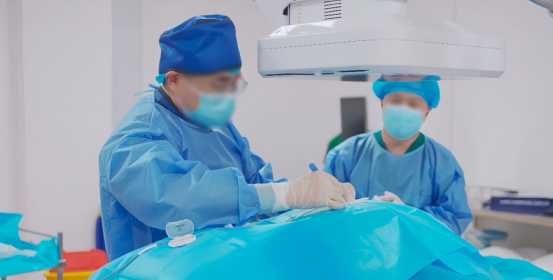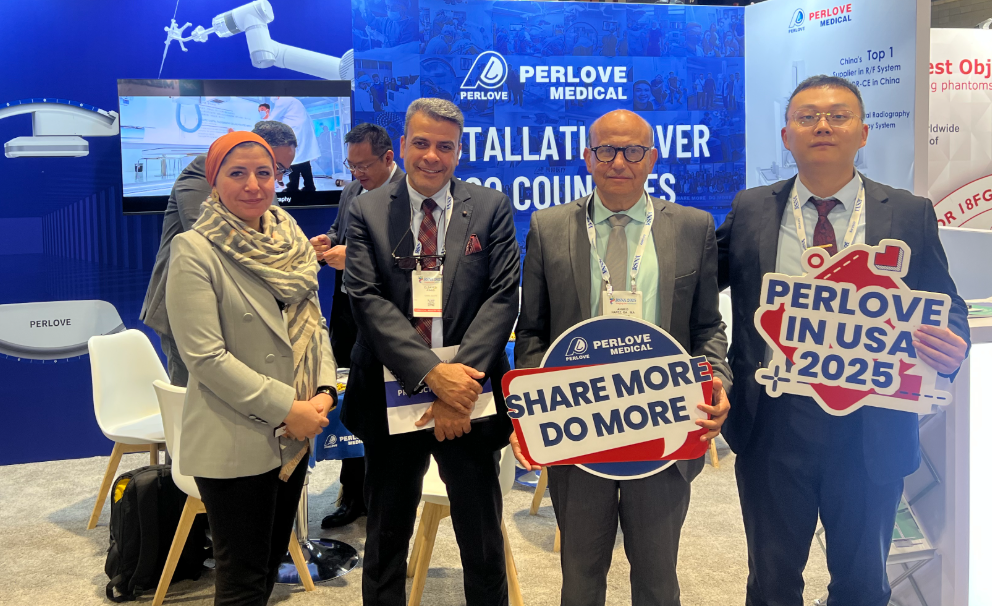News
2023-02-27 11:28:28 Views:1969
【Surgical Robotics Case Sharing】-Orthopedic Surgery Robotic-Assisted Percutaneous Vertebral Balloon Dilationplasty (PKP)
Osteoporotic vertebral compression fractures often occur during inadvertent daily activities, causing pain, hunchback, and height shortening, and seriously affecting the quality of life of the elderly. Percutaneous vertebral balloon kyphoplasty (PKP) is now an internationally recognized treatment method. Director Wang Boyao and his team at the Second Affiliated Hospital of Southern Medical University successfully completed a percutaneous balloon kyphoplasty (PKP) with the assistance of the Perlove Medical orthopedic surgery robot. The patient's lumbar spine compression fracture, with the help of 3D imaging + intelligent navigation full process solution with high precision, made the surgery more efficient and accurate.

Percutaneous balloon dilatation kyphoplasty (PKP) is performed after intraoperative C-arm X-ray fluoroscopy to target the diseased vertebral body, make 1-2 incisions of about 5-6 mm in the patient's back, insert the vertebral body through skin puncture with a special puncture needle under the guidance of a flat 3D C-arm, put in an expandable balloon, expand to a satisfactory degree, and reset the compressed vertebral body. Bone cement is injected and the dilated area is filled and fixed.
Patient information
Case name: Percutaneous balloon kyphoplasty (PKP)
Patient's age: 60 years old
Patient's gender: male
Patient's condition: lumbar compression fracture (lumbar 4)

Preoperative images
Clinical Procedure
A flat 3D C-arm is used to photograph the front and side of the surgical site, determine the surgical site, install a patient tracer, collect 3D images and send them to the orthopedic surgery robot system. In clinical surgery, the orthopedic surgical robot system performs overall planning of the vertebral body to be operated (needle entry point, angle of needle entry, depth of needle entry), and after the planning is completed, the robot arm executes the planning instructions, and after the execution is in place, the lead surgeon injects the guide needle, and after all the guide needles are injected, the images are collected again to confirm the position of the guide needle, and after the position is confirmed, a channel is established through the pedicle to the vertebral body, and a bone expander (balloon ). The balloon expands to restore the height of the vertebral body, creates a cavity in the vertebral body, determines the injection dose of bone cement, and simultaneously injects bone cement to observe its diffusion. orthopedic surgery robot-assisted surgery greatly reduces the risk of surgery and shortens the operation time.


Intraoperative images

Orthopaedic surgery robot planning image

Orthopaedic surgery robot planning image
Difficulties of PKP surgery
The puncture path and the puncture process should be designed according to the fracture type and the degree of compression before surgery. If the puncture inversion angle is too large, there is an increased risk of the puncture needle entering the spinal canal and damaging the neurological spinal cord, while too small results in the balloon being too far to the side of the vertebral body, and balloon expansion may lead to a fracture of the peripheral wall of the vertebral body. For less experienced surgeons, they may need to adjust the direction and angle of puncture repeatedly. Using the orthopedic surgery robot, precise positioning and successful puncture can be achieved in a single pass, avoiding repeated fluoroscopy.
Advantages of the orthopedic surgery robot and flat 3D C-arm
1. Minimization of traditional surgery: less trauma and faster healing.
2. Standardization and intelligence of complex surgery: one-time path planning for difficult spine surgery, greatly reducing the reliance on doctors' experience.
3. Solve the pain points of traditional orthopedic surgery: primary hospitals have the ability to perform difficult surgeries.
4. Improve the economic efficiency of hospitals: fundamentally improve the efficiency of patient rotation.
5. Pre-operative positioning: compared to the use of traditional image intensifier of the same size for filming, the flat 3D C-arm can present the whole segment of the lumbar spine at one time, which is efficient and precise.
-
Application of 3D C-arm Imaging in Radiofrequency Ablation Treatment of Trigeminal Neuralgia
Read More » -
Correcting Limb Length Discrepancy | 3D C-arm Assisted Epiphysiodesis in Pediatric and Adolescent Patients
Read More » -
Perlove Medical Concludes a Successful Presence at RSNA 2025 in Chicago
Read More » -
Multiple C-arm Systems From Perlove Medical Installed at Zhujiang Hospital of Southern Medical University
Read More » -
Perlove Medical 3D C-arm Installed at Ningde City Hospital
Read More » -
Perlove Medical Debuts New Products at the 2025 Chinese Conference of Digestive Endoscopology
Read More »






